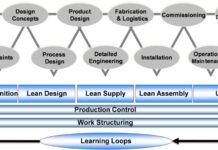For decades, construction has operated under a rigid hierarchy, with Superintendents often viewed as enforcers rather than leaders. This dynamic, fueled by tight budgets, unrealistic deadlines, and unruly trades, has created a system where control is not just desired but required for survival. However, the industry is evolving, and with it, the need for a new approach to Superintendent leadership. The question isn’t whether Superintendents should have control—they must —but how that control is achieved.
The traditional command-and-control model, where decisions flow from the top down, is increasingly ineffective. Lean construction principles emphasize collaboration, waste reduction, and continuous improvement, yet these ideals often clash with the Superintendent’s reality: delivering projects on time and within budget, even if it means overriding suggestions or dismissing new ideas. This disconnect creates frustration on both sides: innovators pushing for change, and Superintendents resisting disruption.
The solution lies in an Integrated Control System. This isn’t about less control; it’s about better control—achieved through collaboration, shared decision-making, and total team participation. A stable, lean, and safe project isn’t built through force; it’s built through a team that operates with clarity, respect, and a shared understanding of the work.
Why This Matters: The construction industry is facing a crisis of efficiency, safety, and worker satisfaction. The old ways aren’t working. To thrive in the future, companies need Superintendents who can not only maintain control but also inspire trust, foster collaboration, and drive continuous improvement.
The Missing Piece: Superintendent Training. For decades, training has focused on project managers, engineers, and even entry-level positions, while the Superintendent—the person responsible for execution—has been largely ignored. There’s a severe lack of resources dedicated to equipping Superintendents with the skills and knowledge needed to navigate the complexities of modern construction.
A New Resource: “Elevating Construction Superintendents.” This book, the first in a series titled “The Art of the Builder,” provides fundamental training for Superintendents, covering essential principles such as:
- Intentional Pre-Construction: Involving Superintendents from the outset to establish a clear vision and plan.
- Lean Contract Integration: Writing lean principles directly into contracts to ensure alignment and accountability.
- Workforce Engagement: Winning over the workforce through respect, clear communication, and fair treatment.
- Team Building: Prioritizing the development of a strong, collaborative project management team.
- Logistics and Quality: Implementing self-sustaining logistics systems and effective quality programs.
The book emphasizes that stability, safety, and efficiency come from creating a clean, organized, and respectful work environment. Workers need to know what they are building, how to install it, where to put it, and have access to the necessary materials, equipment, and a safe environment.
The Integrated Control System assumes that the first priority is to create respect and stability for the workers, and that from there, they can then continuously improve.
The goal isn’t to eliminate control, but to transform it. By equipping Superintendents with the right skills and knowledge, companies can build projects that are not only delivered on time and within budget but also foster a culture of collaboration, respect, and continuous improvement. This isn’t just about building better projects; it’s about building a better industry






























